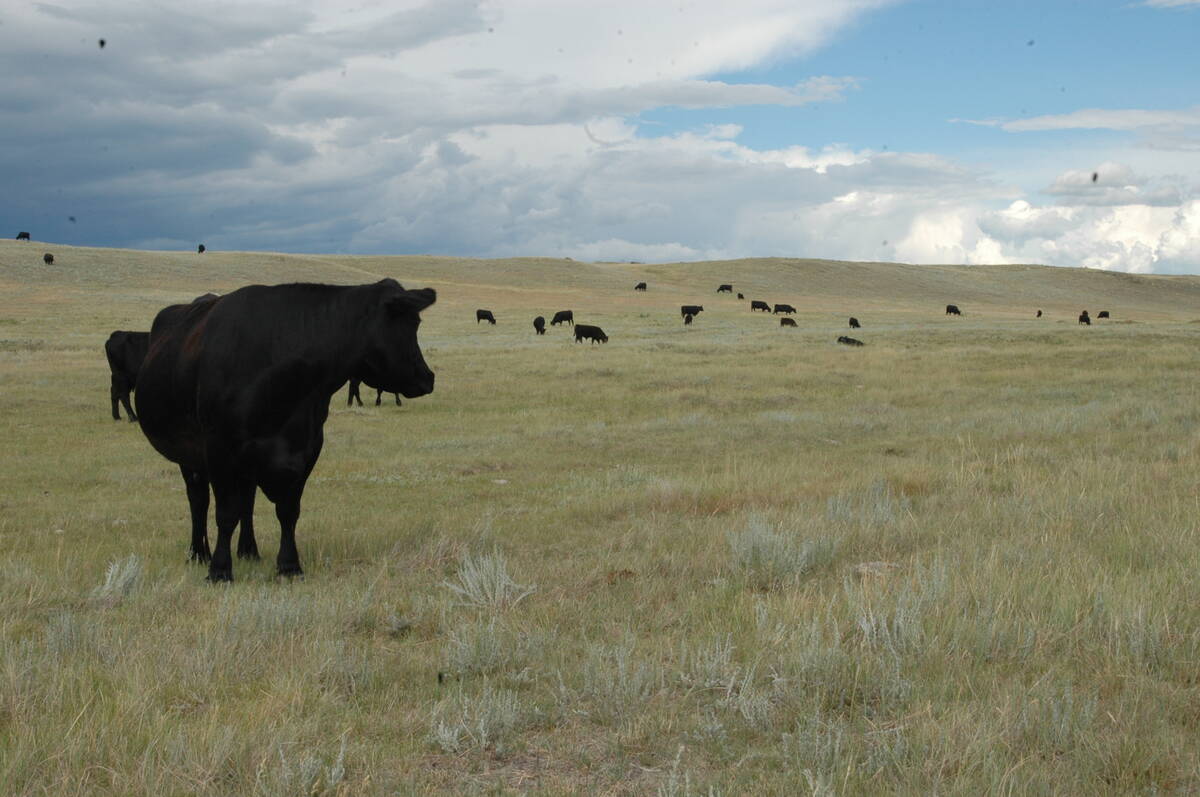Fetotomy, which is the fancy word for cutting up a dead calf within the cow during the birthing process, has a valuable place in a veterinarian’s bag of tricks.
The goal of a fetotomy is to minimize trauma or damage to the cow. The calf at this point is a lost cause because it has already died.
Veterinarians never do a fetotomy on a live calf with the exception of nonviable calves such as schistosomas reflexus (inside out calf), a two-headed calf or a hydrocephalus calf (water on the brain).
Read Also

Canadian Food Inspection Agency slammed for handling of bovine tuberculosis case
The federal government leans heavily on producers to “take one for the team” and risk their livelihoods without any reassurance of support.
Had they been born alive by caesarean section, these calves would have died shortly after or been euthanized.
In a fetotomy, veterinarians use a specialized instrument called a fetotome and obstetrical wire to systematically cut the calf into smaller pieces to facilitate delivery out the vagina.
The fetotome is generally a two-tubed instrument that protects the wire from damaging the cow. It can be anchored to the calf using an obstetrical chain, which allows an assistant to perform the cut while the veterinarian makes sure of positioning.
The veterinarian’s goal is to minimize the number of cuts but to do the right ones to expedite delivery. A cow can often be rebred and go on to further productive years if its health is maintained.
Fetotomy is commonly used on hiplocked calves. They can be split right down the middle of the pelvis as long as the producer has not pulled too hard and the veterinarian can arrive quick enough. The two halves can then be pulled out by hand.
The veterinarian will probably administer anti-inflammatories if he is worried about a downer.
Another common use is for a full breech calf where both legs are rigid and manipulation would lacerate the uterus.
Here one must be confident the calf truly is dead, which can be difficult. Placing a finger in the rectum to determine sphincter tone is one way to tell, but it’s easy to be fooled if a cow has been straining a lot.
The only other way is to reach down and feel the umbilical vessels for signs of a pulse. If there isn’t one, the veterinarian will cut off both hind legs and then pull on the stump with a krey hook, a specialized instrument that looks like an ice pick.
The hook will tighten down into the bone as the veterinarian pulls on the chain attached to it. It is generally best to have it bite into bony tissue such as the spine.
Another good candidate for a fetotomy is dead head-first presentation where the head is well outside the vulval lips. Veterinarians or farmers would have to work extremely hard to force the swollen head back inside the now swollen vagina. Even if this is accomplished, there may not be enough room by the time both front legs are brought up.
The veterinarian can gain valuable room by doing one cut and removing the head and as much of the neck as possible.
This usually makes it possible to get out the rest of the calf. A perfect cut here almost dishes out the area between the shoulders, making that area smaller as well so that a light pull generally extricates the calf.
I have often told equine veterinarians, “who better to handle foalings than bovine veterinarians?” Mares seldom have problems foaling but it is generally a wreck if they do. A dead foal is often the result if these problems are not found and attended to quickly.
I have heard of mares needing to be fully anesthetized to stop straining and allow a head-first presentation to be pushed back. What better opportunity than this to do a fetotomy to minimize damage to the mare?
Foals’ extremely long legs make head-first presentation more difficult in this species, which is where veterinary expertise from one specialty (bovine obstetrics) can definitely help another (equine).
Emphysematous fetuses are dead calves swollen with air because of decomposition. As well, dead calves dry out the uterus, which causes an extreme amount of friction when delivering.
Getting the emphysematous fetus out through the birth channel, even with multiple cuts, will most often save the life of the cow or heifer.
Doing a caesarean section is expensive, difficult and risky. If any of the infected contents from the uterus gets into the cow’s abdomen, it will almost certainly kill the cow.
This is where the skill and experience of the veterinarian are put to work. The calf can often be delivered with lots of lubricant to facilitate movement, manipulation and the right cuts. Exposing either the abdomen or thorax will allow a lot of the internal gas to escape, making delivery easier.
Rebreeding rarely occurs with emphysematous fetuses.
Farmers rarely see a fetotomy performed but it can be a valuable tool to return the cow to working form. Care must be taken to not damage the cow so that its future reproductive function is maintained.
Veterinarians rarely perform fetotomy because of today’s easy-calving breeds, but malpresentations, hiplocks and fetal monsters still happen and veterinarians must be able to properly rectify the situation.














